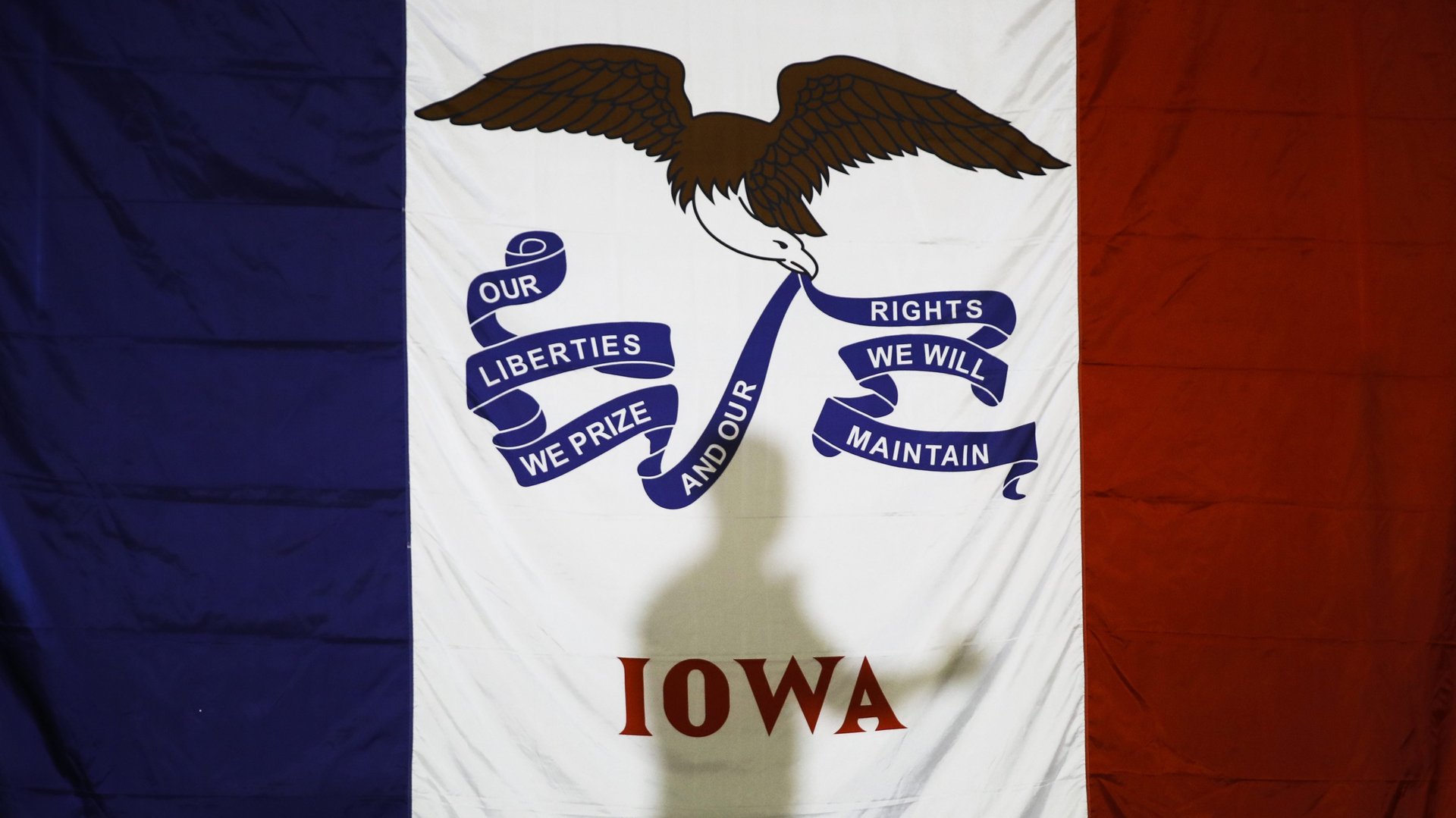The Iowa caucuses will be bilingual for the first time
The Iowa caucuses are set up in a way that disadvantages low-income voters.


The Iowa caucuses are set up in a way that disadvantages low-income voters.
Residents have to travel to designated assemblies in the evening and be present for the duration of the meeting—which means evening workers, particularly those who are paid by the hour, have to forgo part of their income to cast a vote in the Iowa caucus, the first primary, which has a far-reaching impact on the presidential election race.
Voters who don’t speak fluent English also face obstacles. Iowans must publicly voice their preference for a candidate during the caucus, and while there is a provision for translation upon request, it’s an issue that could dissuade some minorities from taking part in the electoral process. Add to that the fact that Iowa permanently disenfranchises felons, who are overwhelmingly people of color, and voters in Iowa end up being even more racially homogenous than the state they live in, which—with a population that is 90% white—is already one of the least diverse in America.
Latinos are the largest ethnic minority in Iowa. In 2018, there were almost 200,000 Latinos living in the state, or just over 6% of the population. Voter turnout among Latinos, however, has typically been low. As a result, campaigns have historically overlooked them.
That may change this year: For the first time, the Iowa Democratic caucuses will officially be bilingual. A dozen of the satellite caucuses will hold the proceedings in both English and Spanish, including in Des Moines and Muscatine.
The Des Moines caucus will be held at the South Suburban YMCA (401 East Army Post Road); the Muscatine one will be at the Muscatine Community College McAvoy Center (1403 Park Avenue). Caucuses begin at 7pm local time and participants need to be in line by then in order to be admitted. Muscatine will have onsite child care.
As is the case for other satellite caucuses, people wanting to attend the bilingual ones won’t have to register ahead of time: The only requirement for participation is being able to vote in the US election.
Making provisions for Latino voters is a way to address economic disparity at the caucuses, too. The Latino population has an 18% poverty rate (compared to a statewide rate of 10.7%). And the per capita income for Latinos in Iowa as of 2017 was about $17, 500—just over half the statewide per capita income of $31,000.